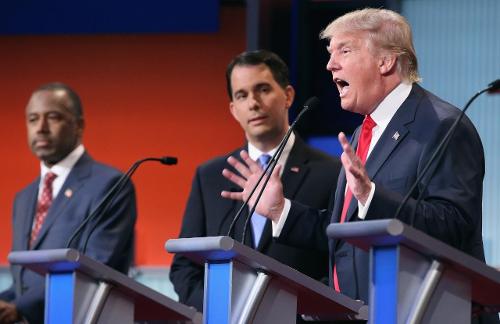As South Korea’s economy struggles, more funds seek higher returns outside of its country.

South Korea’s biggest funds are hoping to get returns from Manhattan eluding them in Seoul.
Korea Post is the latest money manager from the nation to set up shop in New York to find real estate, private equity and hedge fund investments and may hire more people, its U.S. representative Chuljoong Jurng said. It follows National Pension Service and Korea Investment Corp., which have similar offices, chasing better returns from global alternative assets amid low yields at home.
Four interest-rate cuts over the past year haven’t been able to revive South Korea’s economy, which is growing at the slowest pace in two years. The record-low benchmark has stifled returns on bonds, with the government’s 10-year yield shrinking to its lowest ever in April. National Pension Service helped buy a Swedish shopping mall this year, while Shinhan Life Insurance Co. and Hyundai Marine & Fire Insurance Co. helped underwrite a $220 million loan to buy a Manhattan office tower. The buying spree follows similar moves by Chinese investors to park their dollars in New York real estate.
“With the continued low interest rates, it’s inevitable we’ll need to increase alternative investments to boost returns,” Mr. Jurng said. “As our assets under management keep growing, it’s become more important to get access to information and global investment trends for higher returns.”
Global hunt
State-run Korea Post, which oversees 106 trillion won ($89 billion), wants to diversify from stock and bond investments into other sorts of assets, Mr. Jurng said. He expects the new Manhattan office to improve deal sourcing and global research capabilities to help find such opportunities abroad.
Stocks and bonds are less reliable as hedges against each other, according to Kim Eun Gie, a Seoul-based alternative investments analyst at NH Investment & Securities Co. While the securities’ prices have usually been negatively correlated, they’re now moving in unison due to global monetary easing and that’s curbing the effects of diversifying, he said.
Korea’s asset managers have taken note. Their real estate holdings have surged 38% since the end of 2013 to 33.6 trillion won, Korea Financial Investment Association data show. Private equity funds raised 51.2 trillion won at the end of 2014 compared with 44 trillion won a year earlier, according to Korea’s Financial Supervisory Service.
“There aren’t enough alternative assets at home, forcing investors to look abroad,” NH Investment’s Kim said. “Unlike bonds or stocks, alternative investments are typically private, so it’s become essential to open overseas offices to broaden access to information.”
Getting older
Combined assets under management at Korea’s life insurance companies have almost doubled to 537 trillion won as of March 31 over the last five years as people save for retirement. By 2060, the elderly—defined as anyone over 65-years old—will make up 40 percent of the population, Statistics Korea data show.
Alternatives were the best-performing asset class last year for National Pension Service, South Korea’s biggest investor with 470 trillion won of assets. They returned 12.5%, which compared with a 5.25% overall gain. The fund plans to boost holdings of such assets to 11.5% by the end of next year from 9.9% at the end of 2014, it said in June.
National Pension Service, which has both London and New York offices, will also officially open a Singapore location in September to find Asian alternative opportunities, spokeswoman Hwang Ji Hye said.
Big role
“Overseas offices are playing a role in gathering new information and looking for valuable investment opportunities,” said Mr. Hwang. “We’ve been preparing for opening an office in Asia following the New York and London offices to build a strong overseas network.”
Korea Investment Corp., the nation’s $85 billion sovereign wealth fund, plans to almost double its share of alternative investments to 15% by year-end from 8% currently, and aims for 50% over the next five years, Chairman Ahn Hongchul said last month. Ahn expects longer-term returns of at least 10% if holdings rise above half of the portfolio.
It also operates in New York and London, where the focus is on both conventional and alternative assets. The fund plans to send more people from Seoul to those offices, largely to help assess alternative opportunities, said a company official.
“While stocks and bonds are financial assets, alternative assets are real investment, hedging against possible inflation going forward,” NH Investment’s Kim said. “To diversify investment portfolios and boost returns, the alternative investment would be an answer.







